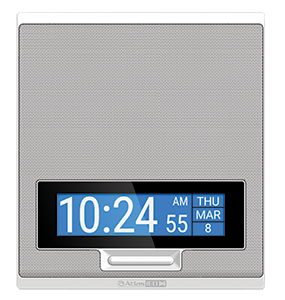Unified Communications (UC) is a popular form of collaborative communications for all business types that leverages todays converged networks. UC can include many forms of communication including instant messaging (chat), voice (IP telephony), mobile convergence, visual signaling, and more, that enables the same notification to be pushed across multiple devices thereby breaking the distance barriers that are characteristic of traditional analog systems.
Most people use a form of UC everyday, the networked phone on their desk. That handset is used to make and receive calls to and from fellow employees either within the same building, sites across town, or in other states. As an integrated part of the network, deploying the call is simplified using a speed dial known as a configured Directory Number (D.N.) code or extension, rather than dialing a complete phone number. This bypasses the service provider’s external analog circuit where additional charges can apply. In this same instance, the user can choose to communicate to a single user (one-to-one) or a group of users (one-to-many) simply by selecting the appropriate D.N. dialing scheme.
Additionally, the company may have selected to use a control application to enhance communications with features like a scheduler or providing pre-recorded messaging services in the environment as part of the UC architecture.
In the above example it is easy to see how effective UC can be in communicating to all desktop handsets in the company. So, the question is how to extend the communication capability from desktop handsets to other spaces like conference rooms, huddle spaces, break rooms, hallways, and outdoor areas a handset cannot handle?
The most common answer to this question is, "we will use a paging system,” which is a traditional analog system that requires its own headend (controller) that has to be integrated to the phone system. Additionally a system like this requires traditional analog infrastructure and with distance limitations and will not be compatible with the full capability of the UC.

AtlasIED has addressed these issues by creating IP endpoints that allow the facility to maximize the existing UC investment, including on-premise and hosted infrastructure platforms maintaining the user-friendly interface, but enabling information to be pushed to spaces beyond the world of desktop telephony and breaking traditional audio-path barriers.
AtlasIED has range of IP endpoints within our portfolio to accommodate every space in an environment regardless of space type. This includes options for Athletic areas, cafeteria’s, waiting rooms, chapels, call centers, and so on…
AtlasIED IPX Endpoints with Displays do more than just show time and push audible information. In the event of an emergency, the highly visible LCD/LED clock becomes an LCD/LED message board that meets ADA compliance for providing visual messaging for hearing-impaired occupant’s.
AtlasIED IPX Endpoints can even provide talkback function where needed. Messages can originate from any IP endpoint (VoIP phone) or AtlasIED IPX endpoint with integrated microphone and can also be triggered in a critical state to allow occupant’s or first responders to gain or share critical information from the emergency location.


